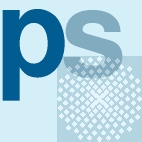 |
 |
@inproceedings {INPROC-2012-25,
author = {Torsten G{\"o}rg},
title = {{A Model-Based Approach to Type-3 Clone Elimination}},
booktitle = {14. Workshop Software-Reengineering (WSR 2012) der GI-Fachgruppe Software-Reengineering, Bad-Honnef, 02.-04. Mai 2012, Proceedings},
publisher = {Gesellschaft f{\"u}r Informatik (GI)},
institution = {Universit{\"a}t Stuttgart, Fakult{\"a}t Informatik, Elektrotechnik und Informationstechnik, Germany},
pages = {21--22},
type = {Workshop-Beitrag},
month = {Mai},
year = {2012},
language = {Englisch},
cr-category = {D.2.7 Software Engineering Distribution, Maintenance, and Enhancement},
department = {Universit{\"a}t Stuttgart, Institut f{\"u}r Softwaretechnologie, Programmiersprachen und {\"U}bersetzerbau},
abstract = {This paper presents an approach to elimination of Type-3 code clones based on
generative techniques. At a first step it is shown how to replace Type-3 clones
by higher-order functions. Then this approach is fur- ther generalized by
utilizing generative designs.},
url = {http://www2.informatik.uni-stuttgart.de/cgi-bin/NCSTRL/NCSTRL_view.pl?id=INPROC-2012-25&engl=0}
}
@inproceedings {INPROC-2012-24,
author = {Mikhail Prokharau},
title = {{Aspects of Code Pattern Removal}},
booktitle = {14. Workshop Software-Reengineering (WSR 2012) der GI-Fachgruppe Software-Reengineering, Bad-Honnef, 02.-04. Mai 2012, Proceedings},
publisher = {Gesellschaft f{\"u}r Informatik (GI)},
institution = {Universit{\"a}t Stuttgart, Fakult{\"a}t Informatik, Elektrotechnik und Informationstechnik, Germany},
pages = {19--20},
type = {Workshop-Beitrag},
month = {Mai},
year = {2012},
language = {Englisch},
cr-category = {I.5 Pattern Recognition},
department = {Universit{\"a}t Stuttgart, Institut f{\"u}r Softwaretechnologie, Programmiersprachen und {\"U}bersetzerbau},
abstract = {While many approaches for detecting undesirable or recurring code patterns have
been presented over the years, there often remains the question how to prop-
erly interpret their results. This article presents a number of aspects of
semi-automatic pattern elimina- tion and discusses consequences of their
application for safety and efficiency.},
url = {http://www2.informatik.uni-stuttgart.de/cgi-bin/NCSTRL/NCSTRL_view.pl?id=INPROC-2012-24&engl=0}
}
|
|
